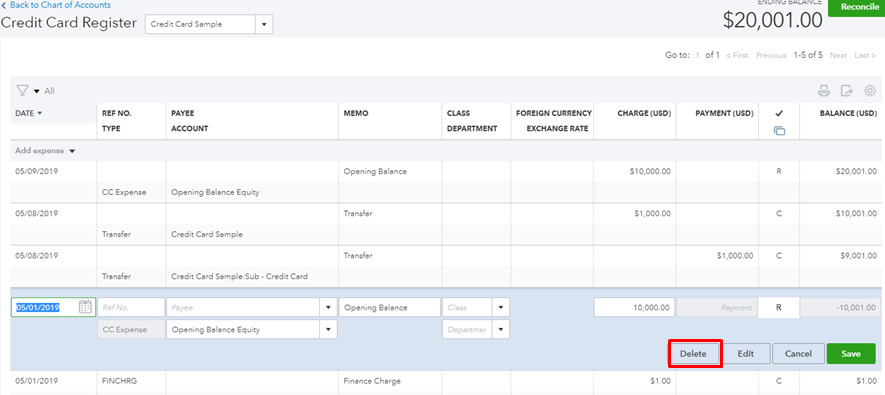Everyone has to delete their bank transaction history may be necessary for various reasons. Privacy concerns are often a primary motivation, as individuals may wish to remove sensitive information to prevent identity theft or unauthorized access to their financial records. Additionally, inaccurate records or duplicate transactions may need to be corrected to ensure the accuracy of financial statements and reports. Some individuals may also want to declutter their transaction history to simplify record-keeping and improve overall organization.
Understanding the reasons behind deleting bank transaction history is crucial for making informed decisions about managing financial data. By evaluating your specific needs and motivations, you can determine the most appropriate approach for deleting transactions and ensure that your actions align with your privacy, security, and organizational preferences.
Understand Your Bank’s Policies

Before attempting to delete your bank transaction history, it’s essential to understand your bank’s policies and procedures regarding data management. Not all banks offer the option to delete transaction history, and those that do may have specific protocols in place for handling deletion requests. Some banks may allow customers to delete individual transactions through their online banking platforms, while others may require customers to submit formal requests or contact customer support for assistance. Familiarizing yourself with your bank’s policies ensures compliance and avoids potential complications. By understanding the available options and procedures, you can navigate the deletion process more effectively and achieve your desired outcomes while adhering to your bank’s guidelines.
What are the Methods to Delete Bank Transaction History?

- Online Banking Platform
Many banks provide online banking platforms that allow customers to manage their accounts and transactions conveniently. Deleting transaction history through the online banking platform is often the most straightforward method. To delete transactions using the online platform, log in to your account, navigate to the transaction history section, and look for options to delete individual transactions or entire statements. Follow the prompts provided by the platform to initiate the deletion process.
- Contacting Customer Support
If you’re unable to delete transactions through the online banking platform or require assistance, contacting customer support is another option. Reach out to your bank’s customer support team via phone, email, or live chat to inquire about the process for deleting transaction history. Customer support representatives can provide guidance and assistance based on your specific needs and circumstances. Be prepared to provide your account information and a clear explanation of the transactions you wish to delete.
- Writing a Formal Request Letter
In some cases, banks may require customers to submit a formal request letter to delete transaction history. If your bank does not offer online deletion options or if you prefer a formal approach, writing a request letter may be necessary. Your request letter should include your account information, a list of transactions to be deleted, and a clear explanation of the reason for the request. Be sure to follow any specific formatting or documentation requirements outlined by your bank and keep a copy of the letter for your records.
Considerations Before deleting your bank transaction history

- Legal Implications
Deleting bank transaction history may have legal implications, especially if the transactions are related to tax records or legal proceedings. Consult with a legal professional or financial advisor to understand the potential consequences before proceeding with deletion. Certain transactions may be subject to regulatory requirements or legal obligations, and deleting them could have unintended consequences. Ensure that you fully understand the implications of deleting specific transactions before taking any action.
- Impact on Financial Records
Deleting transactions from your bank history may impact your financial records and reporting. Consider how deleting certain transactions may affect your budgeting, accounting, or financial planning processes before making any changes. Deleted transactions will no longer appear in your transaction history or statements, which could affect your ability to track expenses, reconcile accounts, or prepare financial reports. Evaluate the potential impact on your financial records and take appropriate precautions to mitigate any adverse effects.
- Privacy and Security Concerns
Ensure that deleting transaction history aligns with your privacy and security preferences. Be mindful of any sensitive information contained within the transactions, such as account numbers, personal identifiers, or transaction details, and take appropriate precautions to protect your data from unauthorized access or exploitation. Deleting transactions may help maintain your privacy by removing sensitive information from your records, but it’s essential to ensure that the deletion process itself is secure. Use strong, unique passwords for your online banking account, enable multi-factor authentication if available, and follow best practices for securing your financial data.
Step-by-Step Guide: Delete your bank transaction history
- Log in to Your Online Banking Account: Access your bank’s online banking platform using your username and password. Ensure that you are logging in from a secure device and network to prevent unauthorized access to your account.
- Navigate to Transaction History: Once logged in, locate the section of the platform that displays your transaction history or statement. This may be labeled as “Account Activity,” “Transaction History,” or something similar.
- Select Transactions to Delete: Review your transaction history and identify the transactions you wish to delete. Most online banking platforms allow you to select individual transactions or entire statements for deletion.
- Follow Prompts for Deletion: Once you’ve selected the transactions you want to delete, look for an option or button labeled “Delete” or “Remove.” Follow the prompts provided by the platform to initiate the deletion process.
- Confirm Deletion and Review: Before finalizing the deletion, review the transactions selected for deletion to ensure accuracy. Double-check the amounts, dates, and descriptions to confirm that you’re deleting the correct transactions. Once you’re satisfied, confirm the deletion to remove the transactions from your bank history permanently.
Following these steps will guide you through the process of deleting your bank transaction history effectively and securely. Be sure to take your time and review your selections carefully to avoid any unintended consequences. If you encounter any difficulties or have questions about the deletion process, don’t hesitate to reach out to your bank’s customer support for assistance.
Delete your bank transaction history Alternative Solutions and Recommendations

In addition to deleting bank transaction history, consider alternative solutions for managing your financial data effectively. Utilizing digital document management systems and financial management apps can offer additional benefits beyond simple deletion. These tools often provide features such as expense categorization, budget tracking, and financial reporting, allowing you to gain deeper insights into your spending habits and financial health. By leveraging these tools, you can not only delete unwanted transactions but also gain better control over your finances and make more informed financial decisions for the future.
Another alternative solution is to utilize credit monitoring services, which can help you keep track of your financial activity and detect any unauthorized transactions or potential fraud. These services typically provide real-time alerts for suspicious activity, enabling you to take immediate action to protect your accounts and personal information. By proactively monitoring your credit and financial accounts, you can reduce the risk of identity theft and financial fraud, providing additional peace of mind and security for your financial data.
Conclusion
Managing your bank transaction history involves more than just deleting unwanted transactions—it requires careful consideration of privacy, security, and alternative solutions for effective financial management. By understanding the methods available for deleting transaction history, considering privacy and security concerns, and exploring alternative solutions such as digital document management systems, financial management apps, and credit monitoring services, you can ensure that your financial data remains secure and accessible when needed. Whether you choose to delete transactions, utilize alternative solutions, or adopt a combination of approaches, the key is to prioritize transparency, accuracy, and security in managing your financial records. By following the steps outlined in this guide and taking proactive measures to protect your financial data, you can navigate the process of managing your bank transaction history with confidence and peace of mind.
Deleting bank transaction history can be a valuable tool for maintaining privacy, correcting errors, and decluttering financial records. However, it’s essential to approach the process thoughtfully and responsibly, considering the potential impact on your financial records and taking appropriate precautions to protect your personal information. By understanding your bank’s policies, following the step-by-step guide for deletion, and exploring alternative solutions, you can effectively manage your bank transaction history and maintain control over your financial data. Remember to prioritize privacy, security, and accuracy throughout the process, ensuring that your financial records remain accurate, organized, and secure.
FAQs
1. Can I delete individual transactions from my bank statement?
While some banks may offer the option to delete individual transactions, others may only allow the deletion of entire statements. Check with your bank for specific capabilities and procedures.
2. Will deleting transactions affect my credit score?
Deleting transactions from your bank history typically does not directly impact your credit score. However, it may indirectly affect your financial management and budgeting processes.
3. Is there a time limit for deleting bank transaction history?
Banks may have specific retention periods for transaction history based on regulatory requirements. Check with your bank to understand any limitations or restrictions on deletion.
4. Can deleted transactions be recovered?
Once transactions are deleted from your bank history, they may be challenging or impossible to recover. Exercise caution and double-check your selections before proceeding with deletion.
5. Are there any fees associated with deleting bank transaction history?
Banks typically do not charge fees for deleting transaction history. However, certain services or requests may incur charges depending on your bank’s policies.














